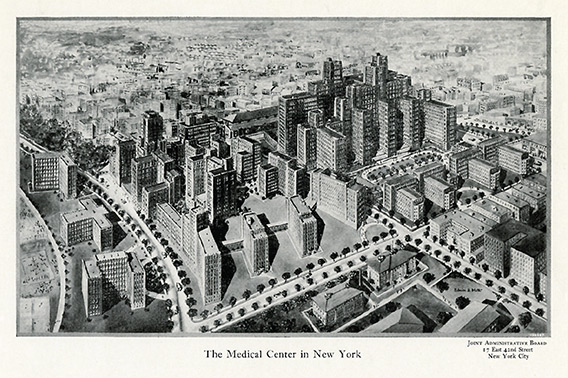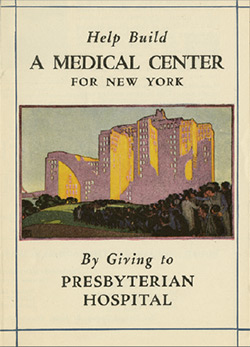A Medical Center For—and By—the Community
 Images Courtesy Archives & Special Collections
Images Courtesy Archives & Special CollectionsThe history of what is now the Columbia University Irving Medical Center frequently focuses on the generosity of the big organizers and donors, whether of land or money. But the medical center might not have been built were it not for the grassroots efforts of medical center neighbors and other New Yorkers.
Four years before it opened in 1928, the medical center faced a funding gap of $4.5 million. Promising to treat the poor of New York without regard to race, creed, or color, the fundraising committee turned to the community for help.
Information pamphlets were given to potential donors in New York and the vicinity, describing the ambitious $10 million medical center as “The Fortress in the Heights – built, equipped, and designed to wage war against disease in a modern way.” Some pamphlets approached the public-spirited citizens in a more direct manner: “In a way, this is your own medical center – to be built in your neighborhood, for your service, with your cooperation.”

In just a year, $3.75 million was raised from 20,000 donors. The gifts received during the campaign ranged in amounts from 25 cents to $500,000. Many of the donations were a result of team fundraising. For example, 15,000 postal employees made a gift of $60,000 in memory of Edward M. Morgan, a former New York postmaster. The alumni and students of the Presbyterian School of Nursing—now the Columbia University School of Nursing—raised nearly $550,000 from more than 1,200 gifts, and a committee of Washington Heights residents raised more than $150,000 through individual donations.
The 1928 opening of what was known for many of its past 90 years as Columbia-Presbyterian Medical Center is inspiring not only because of the medical center’s innovations but also because of the joint efforts and generosity of the community it would call home.
- Log in to post comments

